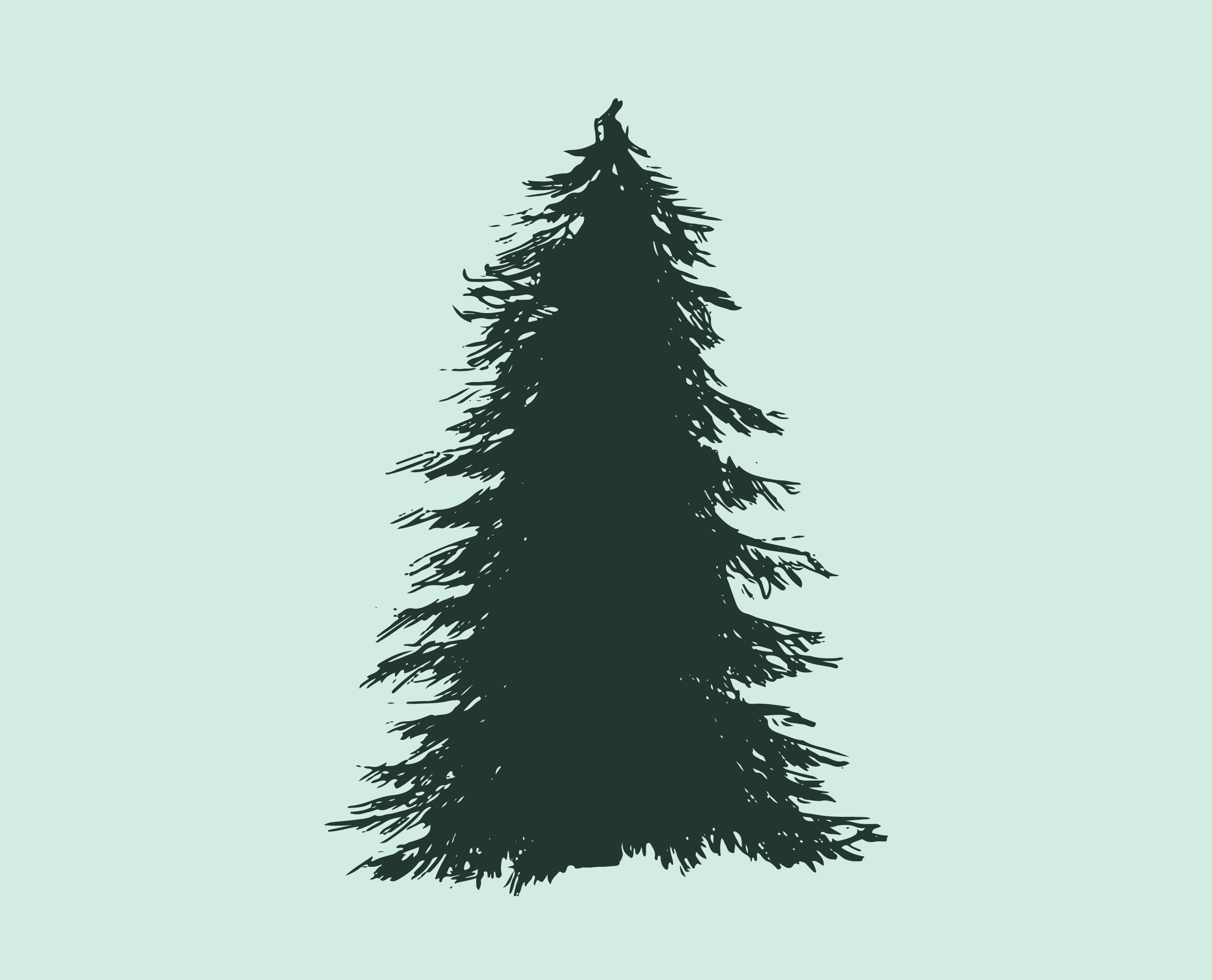Pick the right tree
Whether it’s your first time picking a genuine Christmas tree or you’re a seasoned enthusiast—there’s a tree for everyone.
Click on a tree to learn more
How to identify a
spruce, fir or pine tree.
Evergreens are trees that retain their foliage throughout the year. Many evergreens are conifers (or coniferous). This word refers to how a tree bears cones as part of its reproductive structure.
Spruce, firs and pines all fall under the family of coniferous trees. There are many more varieties, but these are the ones we focus on growing at our farm. Additionally, there are many different sub-species of spruce, firs and pine trees.
The easiest way to identify between a spruce, fir or a pine is by looking closely at the needles.
Needles
Spruce
Spruce trees have sharp, four-sided needles that are attached individually to the branches. The needles are often stiff and can be prickly to the touch.
Fir
Fir trees have softer, flat or rounded needles that are usually attached to the branches in a flat or spiraling pattern. The needles are typically more flexible and are not as sharp as spruce needles.
Pine
Pine trees have long, slender needles that are bundled together in clusters or fascicles. The number of needles per fascicle can vary depending on the species of pine.
Shape
Spruce
Spruce trees tend to have branches that extend all the way to the ground, giving them a full and dense appearance. They have a pyramidal or conical shape.
Fir
Fir trees generally have branches that are more upward-facing and do not extend all the way to the ground. Their form is often more slender and spire-like.
Pine
Pine trees often have branches that are more widely spaced along the trunk, resulting in a more open and layered appearance. They can have various forms, including a conical shape or irregular crown.
Location
Spruce
Spruce trees are commonly found in cooler and northern regions of the Northern Hemisphere, including North America, Europe, and Asia. They are well adapted to cold climates.
Fir
Fir trees are more diverse in their distribution and can be found in various climates and mountainous regions worldwide.
Pine
Pine trees have a wide distribution and can be found in various habitats ranging from temperate to tropical regions. They are often found in forests and can tolerate a range of climates and soil conditions.
Cut Your Own Tree – Pricing
Prices are determined by the height of the tree after it is cut and before it is prepared to take home. The price is calculated on a cost-per-inch basis from the bottom of the tree to half-way up the leader.
The table provides pricing for various tree heights to give you a sense of approximate cost. The exact cost for your tree will be determined at checkout.
We also have yellow tagged “Charlie Brown” trees at $0.45/inch. As a reminder please do not remove tags from the trees.
*We reserve the right to change prices at any time.
| Tree Height (Feet) | Tree Height (Inches) | Price | Best For |
|---|---|---|---|
| <5 | 0-59 | $60.00 | Small areas or dorm rooms |
| 5 | 60 | $72.00 | Studio or small apartments |
| 6 | 72 | $86.40 | |
| 7 | 84 | $100.80 | Most homes with a standard 8' ceiling |
| 8 | 96 | $129.60 | |
| 9 | 108 | $145.80 | Small churches Business offices |
| 10 | 120 | $180.00 | |
| 11 | 132 | $198.00 | |
| 12 | 144 | $237.60 | |
| 13 | 156 | $257.40 | Homes with cathedral ceilings Larger churches Business offices |
| 14 | 168 | $302.40 | |
| 15 | 180 | $324.00 | |
| 16 | 192 | $345.60 |
Credit cards accepted
For bulk and contract orders, email info@advent.farm.




